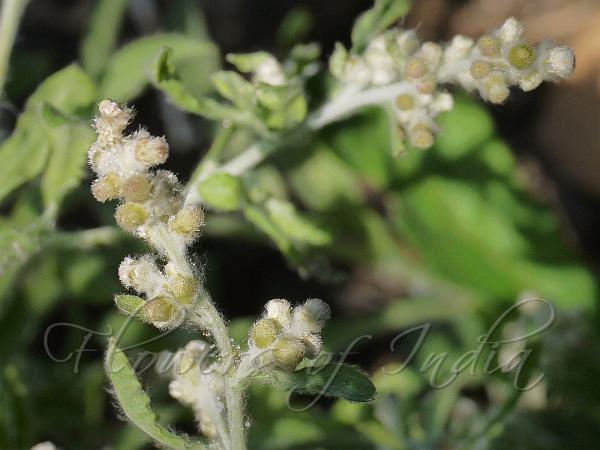|
| Many-Stemmed Cudweed |
|

|

| File size | 373398 |
| Original date | 1/14/12 12:28 PM |
| Resolution | 1600 x 1200 |
| Flash | Flash did not fire, auto |
| Focal length | 45.0mm |
| Exposure time | 1/500s |
| Aperture | 5.0 |
| Focus Distance | |
| Metering Mode | Spot |
| Camera make | Panasonic |
| Camera model | DMC-G1 |
| Sensor type | OneChipColorArea |
|
|
|
|
Photo: |
Botanical name: Gnaphalium polycaulon Family: Asteraceae (Sunflower family)
Synonyms: Gnaphalium floccosum, Gnaphalium gracillimum
Synonyms: Gnaphalium floccosum, Gnaphalium gracillimum
Many-Stemmed Cudweed is an erect to prostrate
annual herb, 15-30 cm tall, branched from the base, usually white
woolly velvety. Leaves are linear-obovate to inverted-lanceshaped,
spoon-shaped, stalkless or base narrowing into a petiole, 0.75-3 x
0.3-0.75 cm, white woolly on the lower surface, hairless on the upper
surface. Flower-heads are 2.5-3 mm across, bell-shaped in terminal or
axillary dense leafy spikes. Phyllaries are 2-3-seriate, scarious, pale
brownish, outer most woolly, 1-2 x c. 1 mm, ovate-lanceolate with
scarious margins and green midrib; inner longer 2-2.5 x c. 0.5 mm,
oblong. Outer marginal florets many, filiform, with c. 1 mm long
corolla, disc florets 4-6, corolla tubular, 5-lobed. Cypselas are about
0.5 mm long, papillose, pappus about 2 mm long, white, setae free,
deciduous separately. Many-Stemmed Cudweed is a widespread weed in
tropical and subtropical Africa, Asia, Australia and tropical America.
In India it is found in the Western Ghats and East Himalaya.
Flowering: All year.
| Identification credit: Gurcharan Singh | Photographed at Ratangad, near Bhandardara, Maharashtra. |
• Is this flower misidentified? If yes,